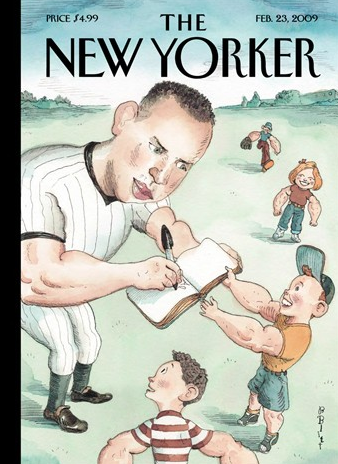Necessity is an evil, but there is no necessity to live under the control of necessity.
Epicurus
A new Gallup-Purdue study that looks at links among college, work, and well-being has generated a lot of conversation – in and out of the academy. Much of the chatter is about some of the study’s top findings: 63% of the students said that they “had at least one professor at [College] who [excited them ] about learning”; 27% found that their professors cared about them as a person; 22% found a mentor that encouraged them about pursuing goals and dreams.
Most notably, “The study found that the type of schools these college graduates attended — public or private, small or large, very selective or less selective — hardly matters at all to their workplace engagement and current well-being. Just as many graduates of public colleges as graduates of not-for-profit private colleges are engaged at work — meaning they are deeply involved in, enthusiastic about, and committed to their work. And just as many graduates of public as not-for-profit private institutions are thriving — which Gallup defines as strong, consistent, and progressing — in all areas of their well-being.”
“The report,” says Charles M. Blow of The New York Times, “has a strong message for students who are asking about which school to attend, for employers who are deciding which people to hire and for colleges that are negotiating their curriculums.”
Google agrees. “Google’s head of people operations Laszlo Bock told the New York Times that top graduates can lack “intellectual humility,” and that schools frequently don’t deliver on what they promise”:
A new Gallup survey finds that in hiring decisions, only 9% of business leaders say that the school on a candidate’s diploma is “very important,” compared to 84% assessing knowledge in the field and 79% looking at applied skills.
+
The challenge, of course, is that higher education mirrors our socio-economic system. And we embrace that, instead, and shy away from whatever Google and Gallup are suggesting. This is because, as reported in Quartz, “School rankings have been found to matter when it comes to pay, an effect which rises over time. Graduates of elite private schools in particular get paid more according to a report from the Century Foundation (pdf). Elite industries like professional services and finance put more weight on top schools in hiring decisions.”
We need not go far to prove this. Let’s look at the distribution of faculty salaries. Reporting for the Huffington Post, Tyler Kingkade, writes that,
The average pay for all types of professors, instructors and lecturers is $84,303 for the academic year 2012-13, but the report noted a big difference between public and private colleges. At public institutions, the average is $80,578, while at private schools, it’s $99,771.For a full professor, the average salary at a private university this year is $139,620, a notable hike over the average $110,143 at public colleges, and that difference has been growing. This public-private gap has increased from 18 percent in 2004 to 24 percent in 2013, according to the Chronicle of Higher Education.
These disparities help create a provocative narrative: it does matter where you go to school – even though you may not get a single soul to pay attention to you at the most elite institutions.
The Gallup-Purdue study calls into question our ruling narrative about the value we place on an institution’s brand versus the care an institution may give individual students, their dreams and their needs.
It’s what goes on inside, behind the hallowed ivy, that counts and not how significant – and marketable – the brand is.
It’s not difficult to see how celebrity culture has a hand in this, too. The narrative concerning the significance of one school over another is manipulated by the tools of advertising and management rather than by what data – and reality – tend to show. We have celebrity schools to go along with our celebrity mindset. It’s not surprising, then, to see how much the University has been totally transformed into yet another corporation that comes with its own story – and is never to be questioned.
“The corporation has the power to determine identity,” writes Chris Hedges in Empire of Illusion. “The corporations tell us who we are and what we can become. And the corporations offer the only route to personal fulfillment and salvation. If we are not happy there is something wrong with us [italics Hedges]. Debate and criticism, especially about the goals and the structure of the corporation, are condemned as negative and ‘counterproductive.'”
We see this model stretching from government to the private sector to education. Don’t be counterproductive. Go along.
In another view of academia, a survey done at U.C.L.A. that looks at shifts in our culture over time, according to David Brooks of The New York Times, says that values have changed. “In 1966, only 42 percent of freshmen said that being well-off financially was an essential or very important life goal. By 2005, 75 percent of students said being well-off financially was essential or very important. Affluence, once a middling value, is now tied as students’ top life goal.”
It’s not surprising that professional admissions coaches and special tutors have become critical for gaining entrance to top schools – and we know who can afford this luxury. We’ve created a race – an anxiety filled race, says Brooks:
As the drive to compete intensifies, other things get streamlined away. In 1966, 86 percent of college freshmen said that developing a meaningful philosophy of life was essential or very important. Today, less than half say a meaningful philosophy of life is that important. University of Michigan studies suggest that today’s students score about 40 percent lower in measures of empathy than students did 30 years ago.
Epicurus’s necessity is now synonymous with affluence – we can’t seem to break from it. If we are creating a world that is less empathetic – and doing so by introducing a mindless competitive model that makes commodities (read slaves) of us all – then we’re definitely creating a world where Evil has found its niche. I’m moved by Epicurus these days – and here’s something else that fits our age: No one when he sees evil deliberately chooses it, but is enticed by it as being good in comparison with a greater evil and so pursues it.
Isn’t this where where we find ourselves today?
As of 2012, the last year we have of available data pertaining to the College where I teach, Middlebury, the most popular major (10%) was Economics – it still remains so. Students I see in this major have one goal: Wall Street and gold. According to the Princeton Review, of the top 10 majors, the top three are Business Administration and Management/Commerce, Psychology and Nursing. Economics ranks a surprising 7, after English Language and Literature, Education and Biology/Biological Science. Accordingly, English is one of the two top majors for gaining entrance into law school; the other is Political Science. And Catherine Rampnell, of The New York Times, in “The College Majors That Do Best in the Job Market,” says that the major that “produced the most graduates in jobs that required degrees was education and teaching; 71.1 percent of this discipline’s alumni had jobs for which a bachelor’s was a prerequisite.:” Yes, many graduates go on to teach – but education is under attack and not hiring as it once did; however, many do not enter teaching, suggesting that education studies makes for great job training – students are organized, can work within tight time parameters, and communicate effectively.
Being an efficient undergraduate that develops a picture of “success” is therefore key; demonstrating that nothing has been “wasted” while in college is important. Not much else matters; the competition is fierce.
“I’m not sure if students really are less empathetic, or less interested in having meaning in their lives,” writes Brooks, “but it has become more socially acceptable to present yourself that way. In the shadow of this more Darwinian job market, it is more acceptable to present yourself as utilitarian, streamlined and success-oriented.
I’m not so sure that Brooks’ use of Darwin is correct, particularly following Edward O. Wilson’s quite cogent argument, in The Social Conquest of the Earth, that societies evolve in direct relationship to their capacity to embrace altruism, the unselfish concern for or a devotion to the welfare of others:
…human groups are formed of highly flexible alliances, not just among family members but between families, genders, classes, and tribes. The bonding is based on cooperation among individuals or groups who know one another and are capable of distributing ownership and status on a personal basis. The necessity for fine-graded evaluation by alliance members meant that the prehuman ancestors had to achieve eusociality in a radically different way from the instinct-driven insects. The pathway to eusociality was charted by a contest between selection based on the relative success of individuals within groups versus relative success among groups. The strategies of this game were written as a complicated mix of closely calibrated altruism, cooperation, competition, domination, reciprocity, defection, and deceit.
Empathy is key. But we’ve turned away from the characteristics of meaningful evolution and focused our attention solely on domination and competition – not altruism, cooperation and reciprocity. Eusociality is a balance, a dance we don’t now enjoy.
Presenting yourself as “utilitarian, streamlined and success-oriented” (here meaning: profitable), leads to the commodification of the self, but of experience too. Which is to say that we are headed totally in the opposite direction – a straight line to damnation.
What matters for me is that Education, which I’ve been a part of for nearly 30 years, has had a very strong hand in ensuring that this model goes unquestioned. The utilitarian, streamlined and success-oriented model says that we have bought hook, line and sinker into the idea that education is about training and monetary success. Learning to think critically and to question – given plenty of lip service – are nowhere to be found in our actions.
What matters to us most?
In Part 2 of What Matters in Education? I will describe an education model for a renewed commonwealth.










